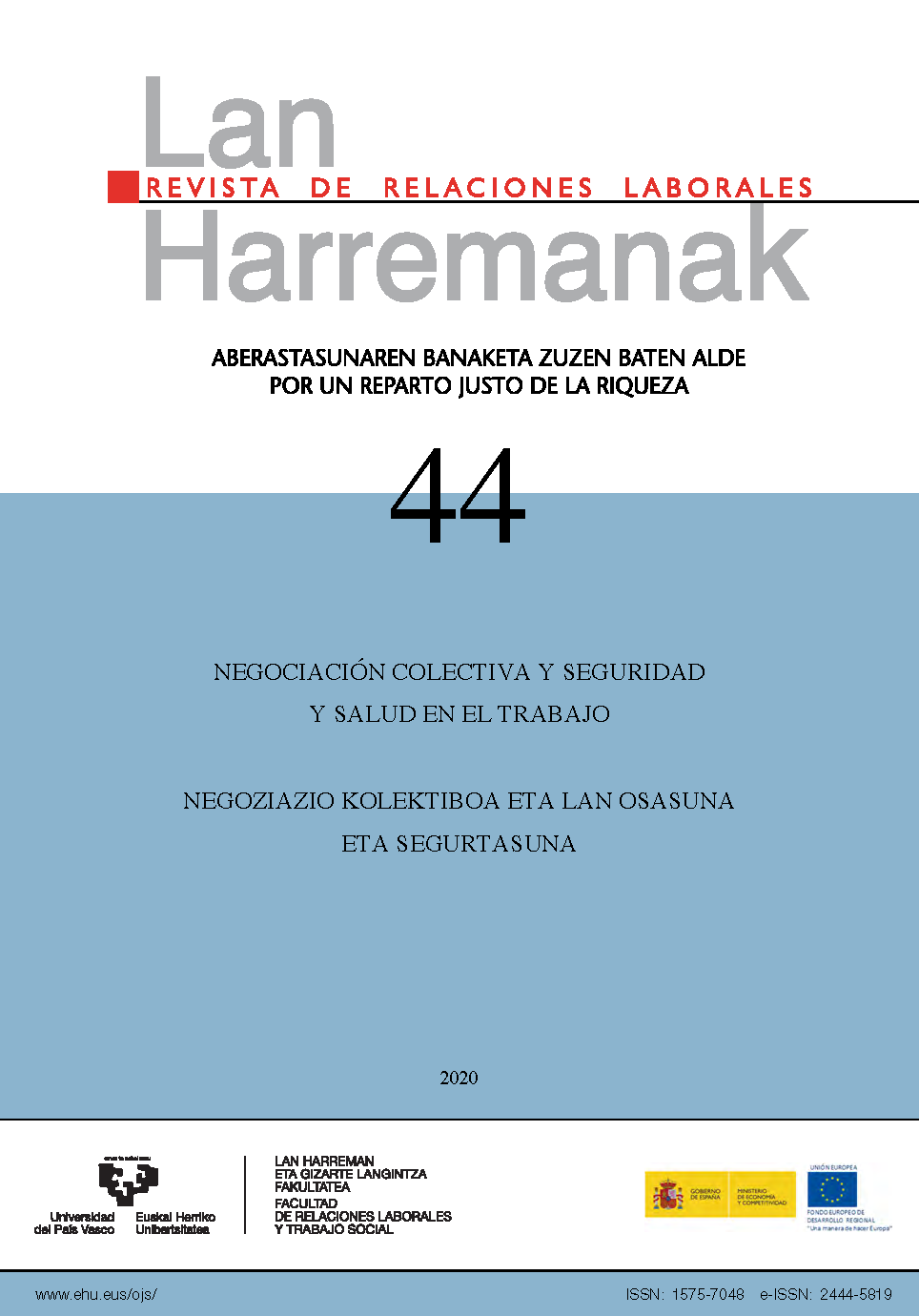Collective bargaining as instrument to stop damage to occupational health from job insecurity
##plugins.themes.bootstrap3.article.main##
##plugins.themes.bootstrap3.article.sidebar##
Abstract
Job insecurity, as a feature of our labour market, is a multifactorial fact that impacts on poor working conditions and harms workers’ health. In this context, the interaction between social partners through collective bargaining, along with Labour Law, is the tool that working people have to get decent working conditions, and also to improve them.
In this respect, there is room for collective bargaining to deal with matters to uphold occupational health, considering that measures that fight precariousness of work have also impact on people’s health. The greatest guarantee for a good result on collective bargaining is to have a wider scope, to create collective rights for the greatest possible number of people.
How to Cite
##plugins.themes.bootstrap3.article.details##
job insecurity, collective bargaining, occupational health, collective agreement.
Authors who publish in the journal "Lan Harremanak" do so in agreement with the following terms:
1. Authors retain the copyright of their papers. while ceding to the journal "Lan Harremanak" the right to the first publication of their article.
2. The publisher UPV/EHU Press is a joint copyright holder, in order to protect the legitimate use of the published paper and compliance with CC terms.
3. Published papers are subject to a Creative Commons CC-BY license (unless stated otherwise) which permits third parties to share the paper, on the condition that the author and source are specified when material is reproduced.
4. Authors can enter into other non-exclusive license agreements regarding the published version of their work (e.g. depositing it in an institutional repository or re-publishing it as a monographic volume), providing the author and source are given appropriate credit.
5. Dissemination of submitted articles via Internet is both allowed and recommended (e.g. in institutional repositories and/or on the researcher's web page), both before and during the process of submission, since this can lead to interesting dialogues and also increase citations to the eventual publication.

